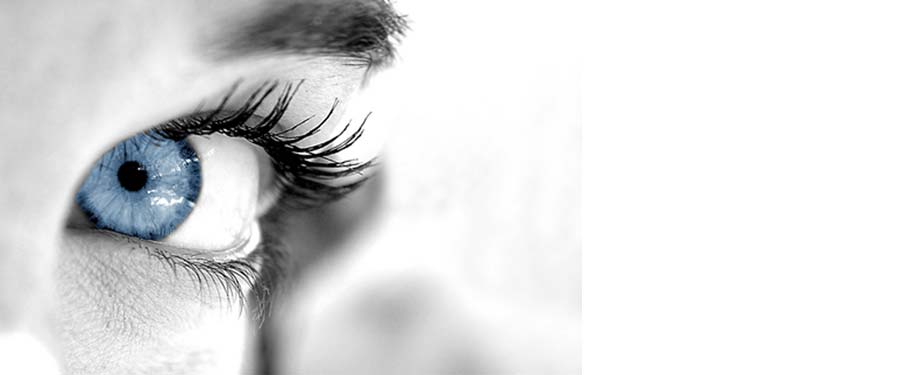GET THE CLEAR PICTURE!
What is Laser vision correction?
Laser vision correction is a revolutionary medical procedure that allows most people freedom from glasses or contact lenses. A cool beam of laser light microscopically reshapes the front contour of the eye, the cornea, improving its focus. LASIK is the technical name of the most common laser vision correction procedure used in recent years. PRK is another type of laser vision correction and is very similar.
What types of vision conditions can be improved?
LASIK can benefit most people with nearsightedness (myopia), farsightedness (hyperopia), and astigmatism. One of the major functions of the front surface of the eye, or cornea, is to focus light. Nearsightedness, or myopia, occurs when your eye is too long in relation to the curvature of your cornea. Things are better seen close up than at a distance. Farsightedness, or hyperopia, occurs when your eye is too short in relation to the curvature of your cornea. Things are better seen at a distance than near. Astigmatism exists when your cornea has an irregular, oval shape and the focus is twisted. Laser vision correction, or LASIK, is not able to remove cataracts or treat a lazy eye.
Why should I consider having Eye Site Sacramento physicians do my laser eye surgery?
With 19 years of practice in Sacramento, the physicians of Eye Site Sacramento have performed thousands of eye surgeries and laser procedures, and have an excellent reputation for patient care. Dr. Jones and Dr. Serdahl are Board Certified, are active members of the American Academy of Ophthalmology, the American Academy of Cataract and Refractive Surgery, the California Association of Ophthalmology, the Sacramento Medical Society, and numerous other associations and committees. We utilize the newest VISX laser techniques, finest equipment and supplies. We will provide you with attention and medical care provided personally by our physicians. Follow-up care is provided free for a period of six months following your laser treatment.
Is Laser vision correction safe?
The laser was invented in the United States in the early 80?s and it has been tested extensively for many years. LASIK has been performed internationally for over 20 years and in U.S. clinical trials with excellent results since 1995. Millions of patients worldwide have undergone successful laser vision correction procedures. There is minimal risk of serious complications. Most of the complications are relatively mild and do not result in long-term interference with vision. The complication rate cited in large studies is between 0.5% and 1.9% at 1-2 years. Our physicians will thoroughly discuss potential complications with any patient considering LASIK.
How is it done?
It is important that the patient makes an educated decision about the benefits of having LASIK. This decision is made after a thorough eye exam, history and consultation with Dr. Jones or Dr. Serdahl. One or both eyes can be done at a session. The procedure is performed at a dedicated laser center carefully screened for its reputation of quality, safety, and top notch staffing and equipment.
The patient lies flat and looks up into the laser machine. The eye is gently prepared with eye drops and the eyelids are softly held open while a fixation instrument is placed upon the eye. A vacuum is applied and an automated corneal shaper is used to lift a very thin flap of surface tissue. Underneath the flap the laser is applied, the flap is then repositioned and the procedure is over.
Our physicians perform this procedure using state-of-the-art, FDA approved laser devices. Patient safety is a top concern. All supplies are disposed of and the equipment is sterilized between patients.
How long will the procedure take?
The procedure usually takes 15-30 minutes. The actual laser time is normally less than one minute. Most patients will notice an improvement in their focus within a few hours after surgery.
Does the surgical procedure hurt?
Anesthetic eye drops are applied to the eye, so there is no pain during the procedure. Some patients report a feeling of pressure during one part of the procedure. Once the anesthetic drops wear off, patients may experience a mild burning sensation, like soap in the eye or sandiness. After the first few hours this mildly uncomfortable feeling usually subsides.
What if I move my eyes during the procedure?
Our physicians observe fine eye movements during the procedure; if any large eye movements occur he will stop the laser immediately with no adverse effects to your eyes. The laser also has a tracker that will follow the eye, so movements will not affect the treatment.
What results can I expect from LASIK?
Over 98% of our patients with low to moderate myopia achieve 20/40 vision or better, which is good enough to drive without having to wear contacts or glasses. Many can expect to achieve 20/20 vision. However, there are no guarantees that you will have perfect vision, and patients with high myopia (more than -7D) and high hyperopia (more than +4D) should have lower expectations. People who are most satisfied with the results of laser correction clearly understand the potential risks and complications and possess realistic expectations of what their vision will be like after surgery.
How long will I be out of work after having LASIK?
It depends on your occupation. Certain jobs that require intense clarity of vision may be difficult to perform for one or two days. Most patients can return to work the next day, assuming their vision is adequate for their job. Most people can also return to active exercise and sports the next day.
Will I need to wear glasses once my eyes have healed?
Most patients who have LASIK do not wear glasses for their daily activities. However, patients may need to wear reading glasses if they are over the age of 40. This is caused by the normal aging of the eye known as presbyopia. This condition occurs with or without LASIK. Some patients may need a minimal prescription for some activities such as night driving.
Will my eyes look different after LASIK?
No. Your eyes will look exactly the same.
Are the results achieved from LASIK permanent?
The effects of LASIK are permanent and do not wear off. But it is important to realize that a person's eye can still change internally. For instance, LASIK is not recommended on teenagers because their eyes can change a great deal, and they would need their vision fine-tuned in a few years. If the procedure is performed after the age of 21, the chance of long-term stable correction is more likely. Patients should also note that while results are usually stable, they could be modified by enhancement procedures ? procedures performed after the initial one if necessary.
What are the risks?
There are some risks associated with laser vision correction. These may include pain or discomfort, night glare, regression, scarring, under or over-correction and infection. Other risks include loss of best-corrected vision, which occurs in about 1% of people.
Does insurance cover this surgery?
Although LASIK is not a cosmetic procedure, it is considered an elective surgery. Most insurance policies will not cover the procedure; although you should check with your insurance company to see if your policy offers partial or full coverage. Some insurance companies will offer a discount and our office will honor those arrangements. In many cases, the cost of the procedure can be covered by employer medical flex plans or medical cafeteria plans that allow pretax dollars to be set aside for medical expenses. It is possible that the cost of LASIK may be deducted from your U.S. federal income taxes. Our office can help make this affordable through a financing plan.
What is PRK? Why is LASIK considered an advancement in laser vision correction?
PRK, or photorefractive keratectomy, is similar to LASIK in that both procedures employ a computer-controlled excimer laser to reshape the cornea of the affected eye. However, LASIK preserves the epithelium (the outermost protective layer of the eye) because the surgeon creates a flap. During PRK, the epithelium is removed by gently brushing the surface. PRK is characterized by a lengthier healing process and more discomfort than LASIK. However, PRK requires less instrumentation and avoids the creation of the flap and its attendant risks.
How do I know if I am a candidate?
An eye examination will determine whether LASIK would be likely to correct your type of vision problem. Dr. Jones or Dr. Serdahl will personally provide this examination and answer any questions you have about laser eye surgery. This examination and consultation is offered at no cost to you.
Contact our office to see if you, a family member or friend may benefit from this revolutionary procedure!





